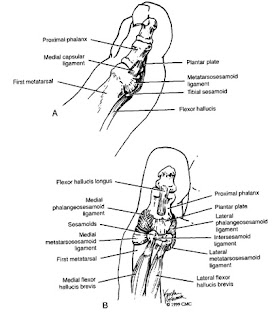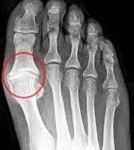It has probably happened to you before. You've been trying to kick a ball, and had your footing funny, or if they were not ready, and jammed the ball straight at the end of the toes. It hurts like crazy, and a little numb you for a minute. That's how you jam your toe.
Jammed toes are very common in sports, and they are often overlooked as unimportant. This is sometimes true, and a little rest and ice can go a long way to reduce the time needed to heal the jammed toes and get things back to normal.
Force of the toes meet in the end will be translated from the bones together.Often the ends of the phalanges (toe bones) in bruised ankle, and that is what caused the swelling and damage the capsule.
| Jammed Finger Joint |
Symptoms like pain when movement, usually quite quickly, depending on how strong the sprain.
Treatment of Jammed Toes:
Treatment of pain and swelling are the first steps of processing a jammed toe. Soon after injury, as you can, use the RICE principles to reduce pain and discomfort. Depending on how much has pain, swelling and loss of motion, you should ask your doctor. This is especially true if you have a successful hard jammed toe, or if your toe violently bent back. You may have suffered a broken toe and not just a sprain. It is sometimes difficult to distinguish between the two, as an X-ray image may be a good idea to apply safely. Once a fracture is excluded, you can work on improving flexibility and strength.Use ice and rest for a few days and then start trying to bend and stretch your toe. Do this carefully in only a mild discomfort to push. Their movement gradually as swelling goes down below.
Some sprained toe may need to be splinted. If you have a considerable swelling and pain, see your doctor, and are to guide you to treatment.
Pain, swelling, loss of motion and strength loss are common symptoms of a jammed toe. Swollen joint is very clear, and you can easily tell, usually when a toe sprain before.
A swollen ankle, and it seems remarkable than others. Unfortunately, swelling is often requires weeks if not months. Sometimes it goes away.
It requires only that you sprained toe. There are many splints and other bandages available to help heal your jammed toe, and they're pretty reasonably priced!. Toes sometimes are overlooked but very important for sports and much of your life. Do yourself a favor and take care of your toes. Just keep ice on the jammed or hurt toe immediately after injuring it.
If you are wondering what to do if you think you have a broken or jammed toe, check out Broken Finger Help!


